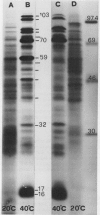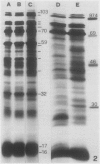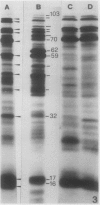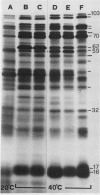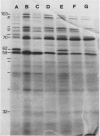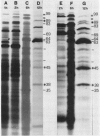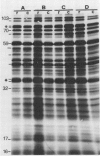Abstract
Coleoptiles and roots of 3-day-old seedlings from five cereal species (Triticum aestivum L., T. durum Desf., Hordeum vulgare L., Secale cereale L., and Triticale) respond to heat shock at 40°C by synthesizing a new set of 13 strong bands (as revealed by one-dimensional sodium dodecyl sulfate gel electrophoresis) as well as some 20°C proteins. Heat shock proteins (HSPs) belong to three different size groups: high molecular mass HSPs in the 103 to 70 kilodalton range, intermediate molecular mass HSPs in the 62 to 32 kilodalton range, and low molecular mass HSPs about 17 to 16 kilodalton in size. At the beginning of the heat shock coleoptiles show a reduced ability to synthesize intermediate molecular mass HSPs but after 4 hours at 40°C they exhibit fully developed HSP patterns identical to that found in roots. Synthesis of early HSPs declines after 7 hours of treatment followed by the appearance of a new set of 12 protein bands (late HSPs) in the ranges 99 to 83, 69 to 35, and 15 to 14 kilodaltons. After 12 hours at 40°C, three other late HSPs of 89, 45, and 38 kilodalton are induced. The induction of late HSPs after 7 hours at 40°C appears to be associated with an enhancement of radioactive methionine incorporation into proteins.
Full text
PDF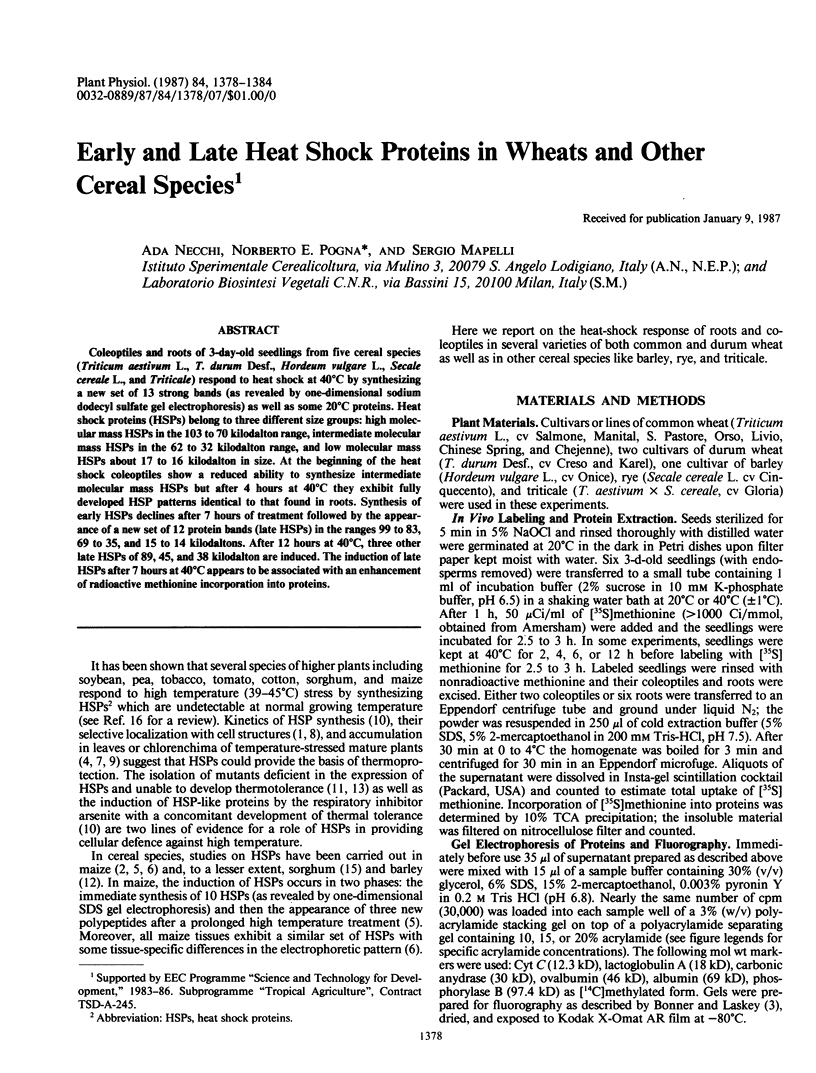
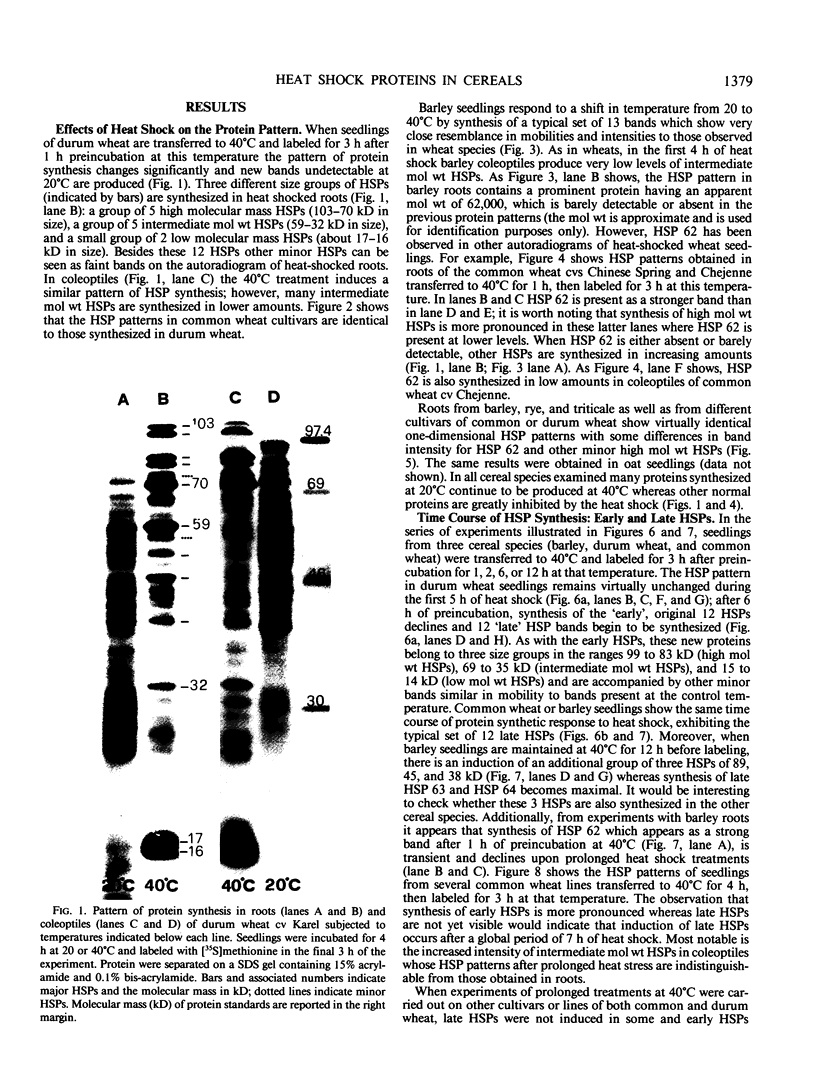
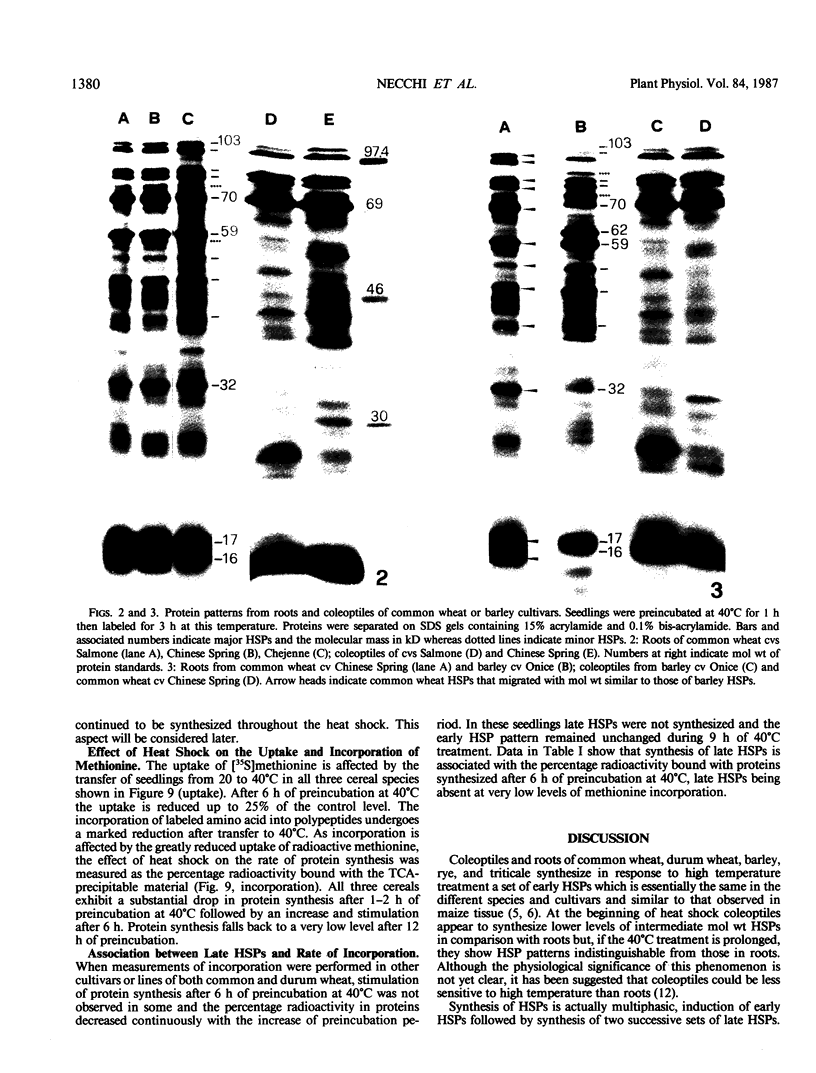
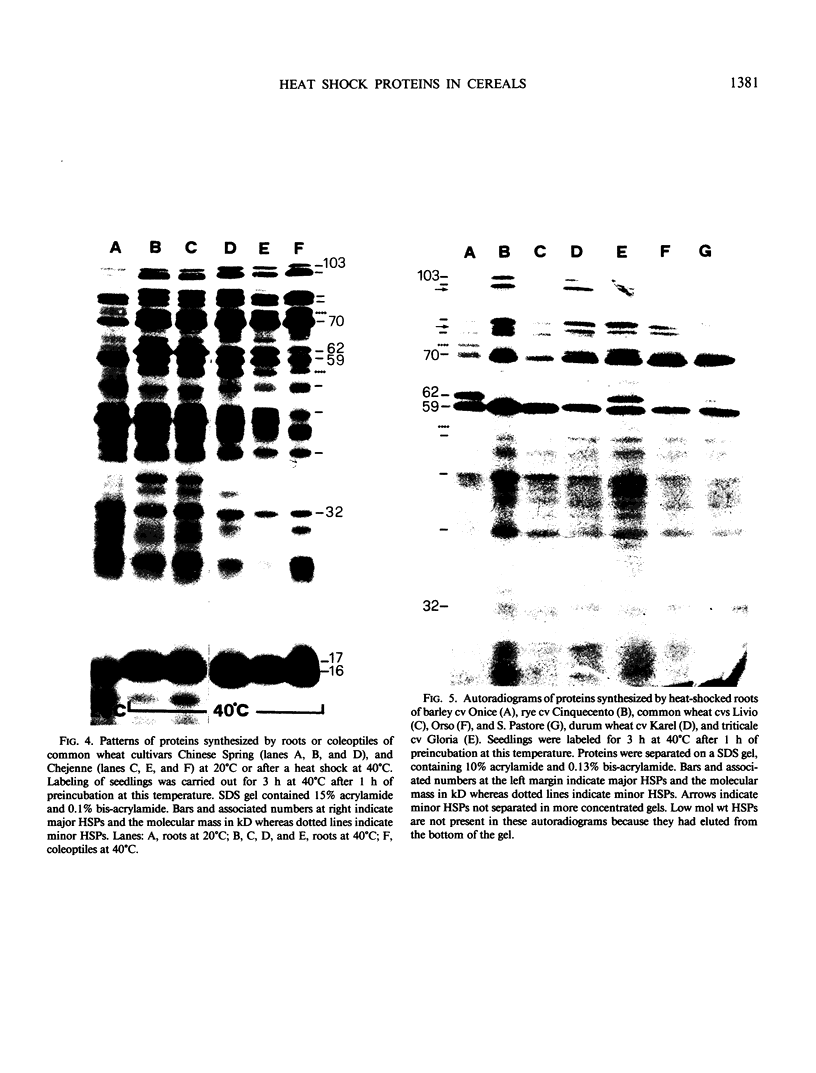
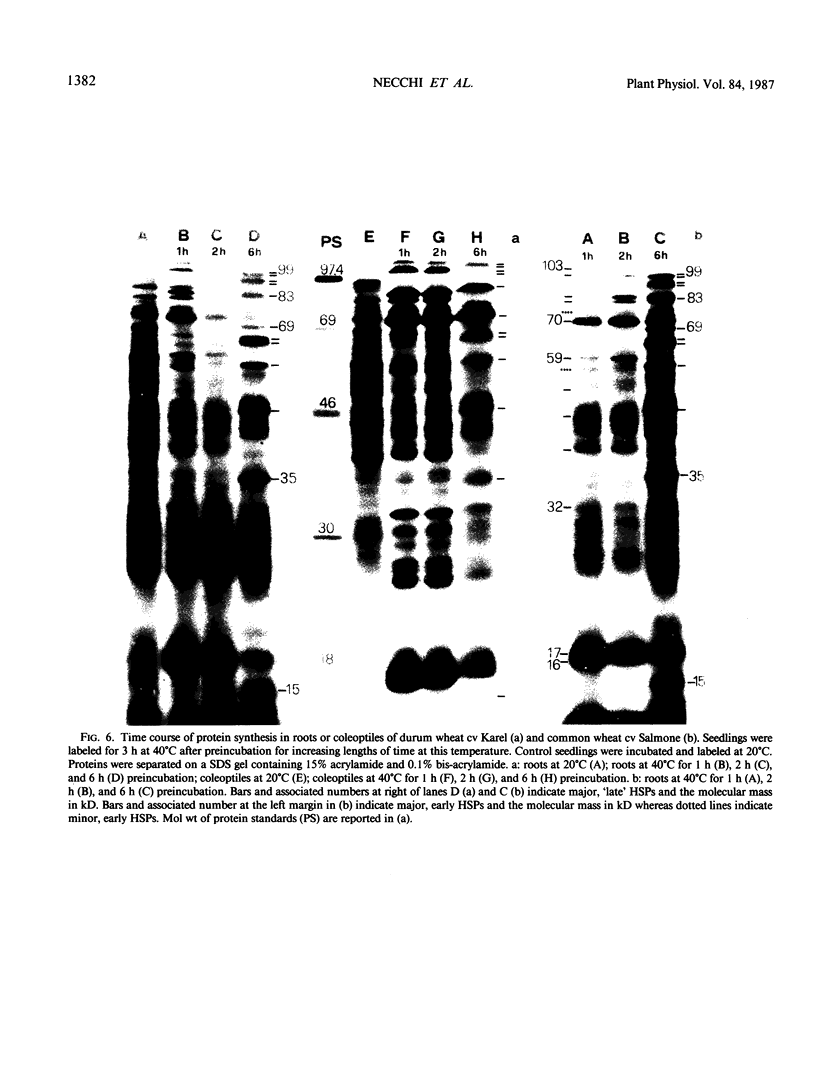
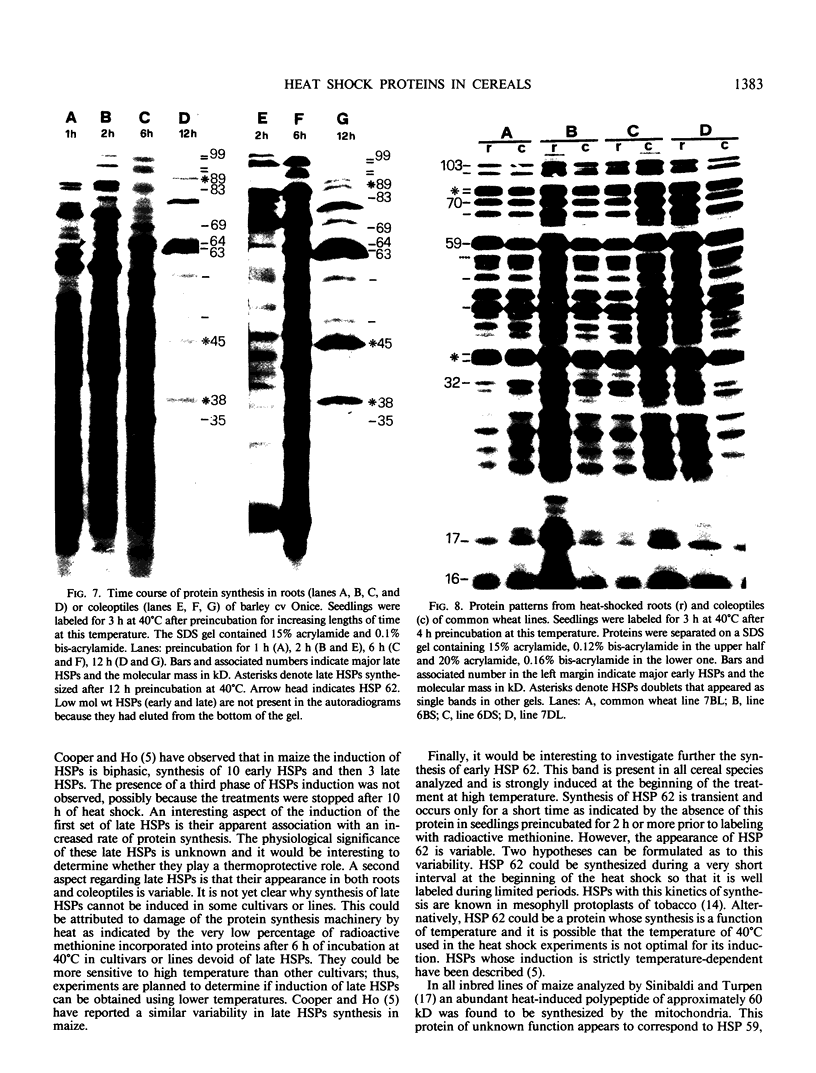

Images in this article
Selected References
These references are in PubMed. This may not be the complete list of references from this article.
- Baszczynski C. L., Walden D. B., Atkinson B. G. Regulation of gene expression in corn (Zea Mays L.) by heat shock. Can J Biochem. 1982 May;60(5):569–579. doi: 10.1139/o82-070. [DOI] [PubMed] [Google Scholar]
- Bonner W. M., Laskey R. A. A film detection method for tritium-labelled proteins and nucleic acids in polyacrylamide gels. Eur J Biochem. 1974 Jul 1;46(1):83–88. doi: 10.1111/j.1432-1033.1974.tb03599.x. [DOI] [PubMed] [Google Scholar]
- Burke J. J., Hatfield J. L., Klein R. R., Mullet J. E. Accumulation of heat shock proteins in field-grown cotton. Plant Physiol. 1985 Jun;78(2):394–398. doi: 10.1104/pp.78.2.394. [DOI] [PMC free article] [PubMed] [Google Scholar]
- Cooper P., Ho T. H., Hauptmann R. M. Tissue specificity of the heat-shock response in maize. Plant Physiol. 1984 Jun;75(2):431–441. doi: 10.1104/pp.75.2.431. [DOI] [PMC free article] [PubMed] [Google Scholar]
- Cooper P., Ho T. H. Heat shock proteins in maize. Plant Physiol. 1983 Feb;71(2):215–222. doi: 10.1104/pp.71.2.215. [DOI] [PMC free article] [PubMed] [Google Scholar]
- Kee S. C., Nobel P. S. Concomitant changes in high temperature tolerance and heat-shock proteins in desert succulents. Plant Physiol. 1986 Feb;80(2):596–598. doi: 10.1104/pp.80.2.596. [DOI] [PMC free article] [PubMed] [Google Scholar]
- Kimpel J. A., Key J. L. Presence of Heat Shock mRNAs in Field Crown Soybeans. Plant Physiol. 1985 Nov;79(3):672–678. doi: 10.1104/pp.79.3.672. [DOI] [PMC free article] [PubMed] [Google Scholar]
- Lin C. Y., Roberts J. K., Key J. L. Acquisition of Thermotolerance in Soybean Seedlings : Synthesis and Accumulation of Heat Shock Proteins and their Cellular Localization. Plant Physiol. 1984 Jan;74(1):152–160. doi: 10.1104/pp.74.1.152. [DOI] [PMC free article] [PubMed] [Google Scholar]
- Loomis W. F., Wheeler S. A. Chromatin-associated heat shock proteins of Dictyostelium. Dev Biol. 1982 Apr;90(2):412–418. doi: 10.1016/0012-1606(82)90390-6. [DOI] [PubMed] [Google Scholar]
- McAlister L., Finkelstein D. B. Heat shock proteins and thermal resistance in yeast. Biochem Biophys Res Commun. 1980 Apr 14;93(3):819–824. doi: 10.1016/0006-291x(80)91150-x. [DOI] [PubMed] [Google Scholar]
- Meyer Y., Chartier Y. Long-lived and short-lived heat-shock proteins in tobacco mesophyll protoplasts. Plant Physiol. 1983 May;72(1):26–32. doi: 10.1104/pp.72.1.26. [DOI] [PMC free article] [PubMed] [Google Scholar]
- Sinibaldi R. M., Turpen T. A heat shock protein is encoded within mitochondria of higher plants. J Biol Chem. 1985 Dec 15;260(29):15382–15385. [PubMed] [Google Scholar]



